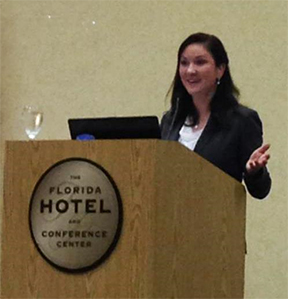Utilities Address HVACR Education.
 When
HVACR instructors gather to learn, they expect to hear
about new technologies just around the corner that they
need to integrate into their training. When
HVACR instructors gather to learn, they expect to hear
about new technologies just around the corner that they
need to integrate into their training.
However, equally important is to learn about what is not
being covered effectively in current HVACR Education and
what they can do to change it.
Shortly before Anne Marie Blankenship, an HVAC Program
Manager at Southern California Edison (SCE) took the
stage at the HVAC Excellence National HVACR Educators
and Trainers Conference in Orlando, Florida, some
instructors inquired why a California utility was
speaking at a national conference in Florida.
Once Ms. Blankenship took the stage people quickly
understood that Southern California Edison (SCE) is
leading the way in developing energy efficiency programs
in the United States. There is a good chance that
wherever an HVACR instructor lives, their local utility
is watching SCE and using their programs as a model for
their own.
Ms. Blankenship was quick to ask the attendees "How many
of you have heard of Title 24? How many of you are
familiar with the Western Performance Alliance?"
With silence throughout the room she began to share some
statistics of a study of residential HVACR equipment:
•72% are over sized
•68% are improperly charged
•70% have inadequate airflow
•91% remains unchecked for combustion efficiency.
Story
continues below ↓
|